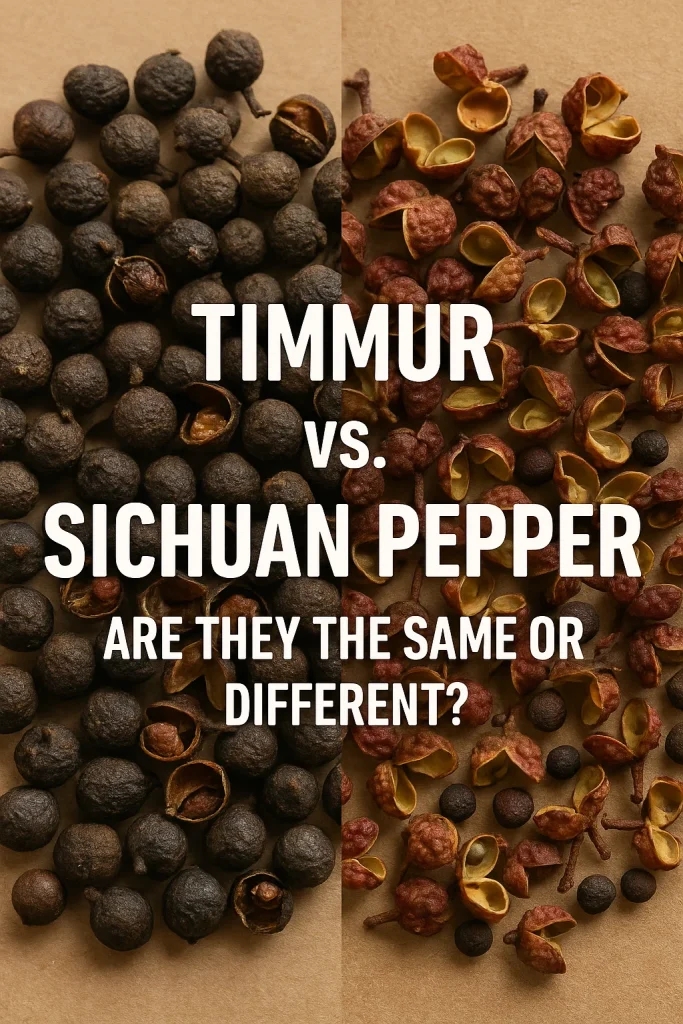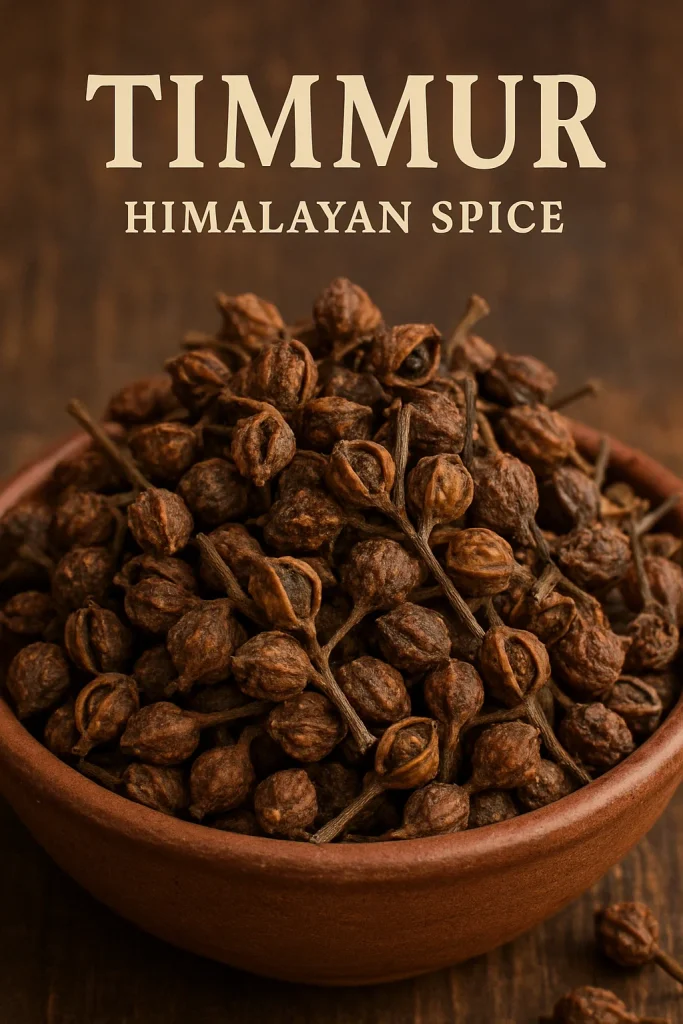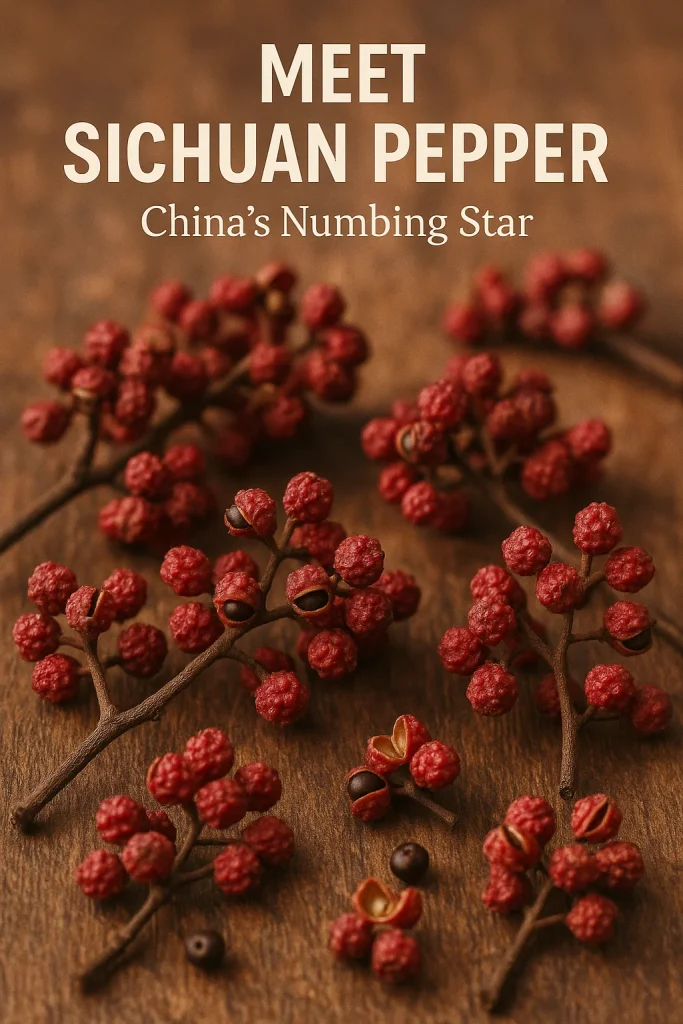
At ThuloThaklai, we’re passionate about showcasing the vibrant flavors of Nepali cuisine. One question we often hear is: Is Timmur the same as Sichuan Pepper? These two spices may look similar and share a numbing kick, but they’re not identical. Let’s explore their differences, similarities, and how they shine in Nepali and Sichuan dishes.
A Quick Answer
Timmur (also called Timur or Timut) and Sichuan Pepper both come from the Zanthoxylum genus, but they’re different species with unique flavors, origins, and culinary roles. Think of them as spicy cousins—related, yet each with its own flair.
Meet Timmur: Nepal’s Himalayan Gem

Timmur (Zanthoxylum armatum) grows wild in the Himalayas, especially in Nepal. This dark brown spice is a cornerstone of Nepali cuisine, known for its citrusy, zesty flavor and subtle numbing effect. At ThuloThaklai, we use it to bring authentic Himalayan magic to our dishes, including:
- Achaar: A tangy, spicy Nepali staple.
- Chutneys: Adding a bold, aromatic twist.
- Thakali Specialties: Enhancing meats and veggies.
Curious to taste it? Check out our menu for a true Nepali experience!
Meet Sichuan Pepper: China’s Numbing Star

Sichuan Pepper (Zanthoxylum simulans or Z. bungeanum) hails from China’s Sichuan province. With its reddish-brown hue, it’s prized for its floral, herbal flavor and intense numbing sensation. It’s the secret behind Sichuan cuisine’s famous málà (numb-spicy) taste, shining in:
- Stir-Fries: Think spicy noodles or Kung Pao chicken.
- Broths: Adding depth and a tingling kick.
While we don’t feature Sichuan Pepper at ThuloThaklai, it’s a fascinating contrast to our beloved Timmur.
How Do They Compare?
Both spices share a numbing quality (thanks to hydroxy-alpha sanshool), but their differences set them apart. Here’s a side-by-side look:
Feature | Timmur (Timur/Timut) | Sichuan Pepper |
Species | Zanthoxylum armatum | Zanthoxylum simulans / Z. bungeanum |
Origin | Nepal, Himalayas | Sichuan, China |
Color | Dark brown | Reddish-brown |
Flavor | Citrusy, zesty, mild numbing | Floral, herbal, strong numbing |
Culinary Use | Nepali pickles, chutneys | Sichuan stir-fries, málà dishes |
Can You Swap Them?
In a pinch, yes—but the results won’t be the same. Substitute Timmur for a zesty lift or Sichuan Pepper for a bold, numbing twist. At ThuloThaklai, we stick to Timmur to honor Nepali traditions, but experimenting could inspire your next kitchen adventure!
Why the Mix-Up?
The confusion stems from the catch-all term “Sichuan Pepper” in English, sometimes applied to all Zanthoxylum spices. In Nepal, Timmur is occasionally dubbed “Nepali Sichuan Pepper,” but its unique profile sets it apart from its Chinese cousin.
The Conclusion
Timmur and Sichuan Pepper are distinct spices with shared roots. Both bring a numbing thrill and citrusy notes, but their flavors and uses reflect their origins—Himalayan zest versus Sichuan spice. At ThuloThaklai, Timmur is our star, infusing our dishes with Nepal’s soul.
Ready to savor Timmur’s magic? Reserve a table and dive into the flavors of the Himalayas!

